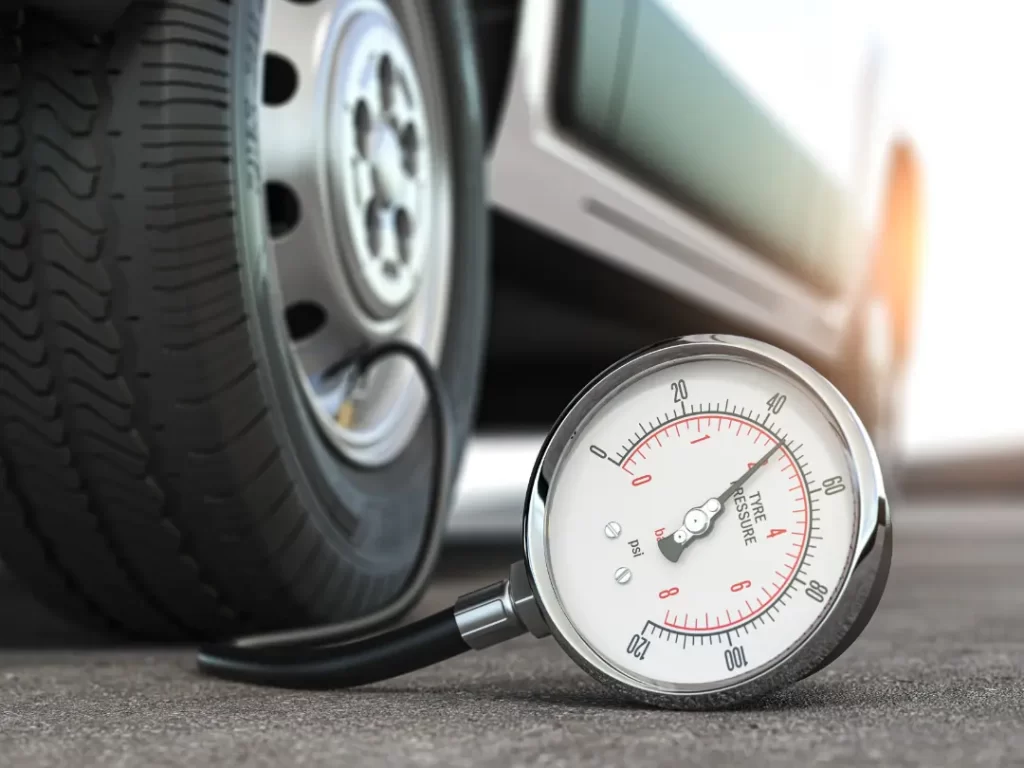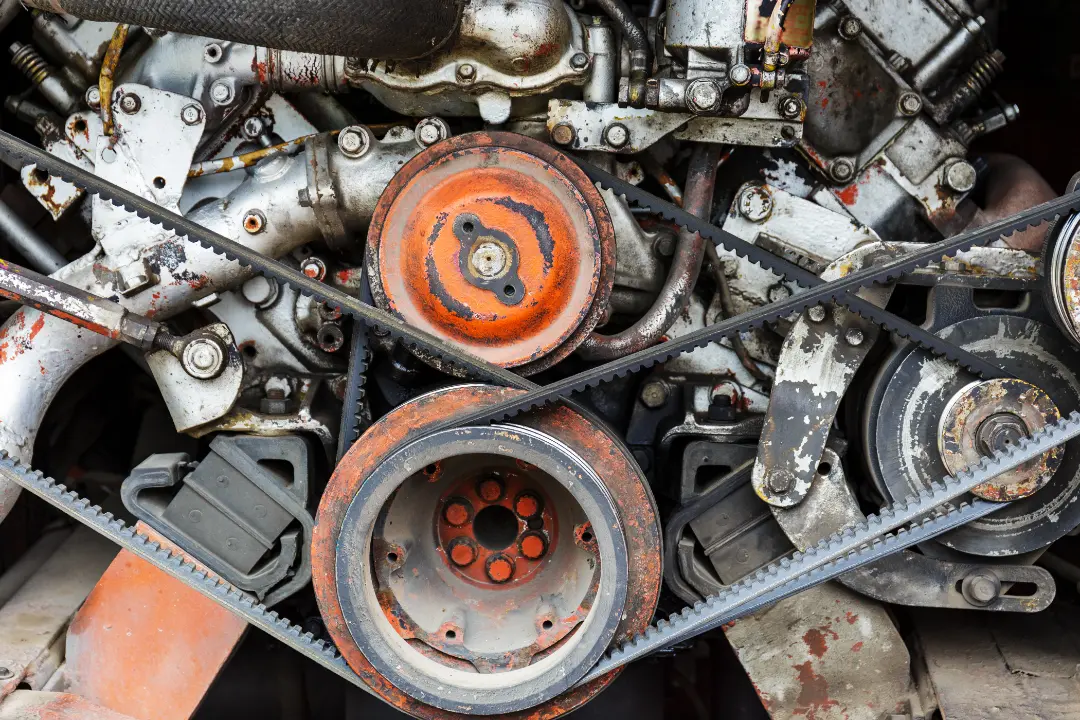Tyre load rating shows the weight a tyre can safely carry. It’s crucial for vehicle safety and performance. This guide will explain what it is, how to find it, and why it matters.
Key Takeaways
- A tyre load rating indicates the maximum weight a tyre can safely support, which is crucial for vehicle safety and performance.
- Using tyres with a suitable load rating is vital; inappropriate ratings can lead to tyre failure, handling issues, and voided insurance policies.
- All Vehicle Services offers top-quality tyres, expert fitting, and reliable car maintenance, all backed by over 10 years of experience. Trust us to keep your vehicle in prime condition and on the road.
What is a Tyre Load Rating?
A tyre load rating specifies the weight each tyre can safely support, which is a cornerstone of vehicle safety. This rating is also called the load index, reflecting the maximum weight capacity a tyre’s load can manage under optimal conditions. Overloading a tyre can lead to severe failure, an experience no driver wants.
The tyre load rating is vital in driving safety and the tyre’s service life. For example, a tyre with a load index rating of 91 can support up to 615 kilograms. This number is not just random; it’s a calculated value based on extensive testing and engineering.
Understanding these numbers is crucial whether you need tyres for heavier loads or reliable ones for daily commutes, as they impact your vehicle’s performance.

Finding your tyre load index is simpler than you might think. This information is located on the tyre’s sidewall, right next to the diameter measurement. Look for a two- or three-digit number representing the load index, typically followed by a single letter denoting the speed rating. For example, a tyre might read “205/55R16 91V,” where “91” is the load index and “V” is the speed rating.
The load index is usually positioned next to the speed rating on the tyre sidewall, making it easy to identify. This number is part of the tyre size code, found at the end of the string of characters on your tyre. Familiarise yourself with these markings; they contain crucial information for tyre replacement, including the load index, speed rating, and tyre size.
Understanding these numbers ensures you select the right tyres for your vehicle. Using the wrong tyres, like those with insufficient load ratings, can lead to tyre failure and compromise your safety on the road. Always check these numbers before purchasing new tyres to ensure they meet your vehicle’s specifications.
Understanding the Tyre Load Index Chart
The Tyre Load Index Chart is an essential reference tool that helps drivers and vehicle owners determine the maximum weight a tyre can safely support. This chart pairs specific load index numbers, which are marked on tyre sidewalls, with corresponding load capacities in kilograms (kg). By consulting the chart, you can ensure your tyres are appropriate for the weight demands of your vehicle, including passengers, cargo, and equipment.
In addition to safety, the Tyre Load Index Chart also aids in compliance with vehicle manufacturer recommendations. Most vehicles have a specified load index that ensures optimal performance and handling. Exceeding the tyre’s load capacity can negatively impact steering, braking, and fuel efficiency. The chart becomes even more crucial for heavy vehicles, such as vans or trucks, where weight loads vary frequently.
Importance of Correct Tyre Load Ratings
Choosing the correct tyre load rating ensures both safety and performance. Using tyres with an unsuitable load index can lead to tyre damage, poor vehicle handling, and even catastrophic failures, especially when towing or during off-road travel. Overloading your tyres can result in excessive wear, punctures, and reduced grip, all of which can compromise your safety.
Incorrect tyre load ratings can also void insurance policies and warranties, leading to potential legal penalties and fines. Furthermore, overloading tyres can cause excessive heat build-up, jeopardising the tyre’s structural integrity and leading to blowouts. This is particularly dangerous at high speeds or on long journeys.
Consulting your vehicle’s owner manual and adhering to the manufacturer’s recommended load capacities is essential. This ensures optimal tyre performance, reduces risks, and enhances your driving experience.

Can I Use Tyres with a Higher Load Rating?
Using tyres with a higher load rating than necessary is generally safe and can even offer certain benefits. For instance, tyres with a higher load rating can carry heavier loads without compromising safety. This can be particularly useful for vehicles that frequently transport heavy goods or for those who often drive in demanding conditions.
However, there are some considerations. Due to their stiffer construction, tyres with excessive load ratings might result in a harsher ride quality. Also, while higher load ratings are usually compatible with most vehicles, they can sometimes lead to premature wear under certain conditions.
It’s always best to consult experts like those at AVS to ensure you’re making the right choice for your needs.
Consequences of Using Tyres with a Lower Load Rating
Using tyres with a lower load rating than recommended is a recipe for disaster. This can lead to increased chances of accidents due to tyre failure, quicker tyre deterioration, and a higher risk of blowouts. Lower load ratings compromise driving stability and overall safety, making your vehicle more prone to handling issues.
Moreover, failing to adhere to the manufacturer’s load capacity index can void your insurance policy in case of an accident. The risks far outweigh any potential benefits, so always ensure your tyres meet or exceed the recommended load ratings to maintain safety and performance.
Tyre Load Rating and Tyre Pressure
Tyre pressure plays a significant role in maintaining the correct load capacity. Properly inflated tyres help distribute the load evenly across the tyre’s contact area, significantly enhancing the maximum load capacity. Maintaining the right tyre pressure ensures better handling, fuel efficiency, and overall vehicle performance.
Incorrect tyre pressure can lead to decreased steering precision, longer response times, and uneven tyre wear. Various factors, including vehicle position, inflation levels, and environmental conditions, influence the actual load a tyre can handle. Regularly checking and maintaining the correct tyre pressure is crucial for safety and optimal performance.
Ensuring the correct tyre pressure is even more critical for those carrying heavy loads or driving in varying conditions.

Differences Between Tyre Load Index and Speed Rating
While the tyre load index indicates the maximum weight a tyre can support, the speed ratings show the maximum speed a tyre can safely maintain. Both are crucial for determining overall tyre performance and safety. For example, a tyre with a load index of 91 and a speed rating of V can safely support up to 615 kilograms at speeds up to 240 km/h.
When purchasing tyres, always consider both the load index and speed rating together. This ensures you get tyres that meet your vehicle’s specifications and provide the best performance and safety.
All vehicle services: Your Expert Tyre Partner in Sittingbourne for Safe and Smooth Journeys
All Vehicle Services (AVS) in Sittingbourne is your trusted and reliable expert for choosing the right tyres for your vehicle. With over a decade of experience, we offer a wide selection of tyres from leading brands like Michelin, Goodyear, and Bridgestone, ensuring your car’s safety and performance are never compromised. Whether you need premium tyres for heavy loads or budget options for everyday use, our team is here to guide you every step of the way.
With AVS, you’ll always be confident that your tyres are perfectly suited to your driving demands, keeping you safe on the road in all conditions.
Comprehensive Vehicle Care for Peace of Mind
Choosing the right tyre load rating is only part of keeping your vehicle roadworthy. At AVS, we provide a full suite of services to ensure your car performs at its best. From expert tyre fitting and wheel alignment to MOT checks and comprehensive servicing, we’re your one-stop shop for total vehicle care.
Our technicians, with over 50 years of combined experience, are dedicated to providing precise, efficient, and trustworthy service. Whether you’re driving a family car, a commercial van, or a performance vehicle, AVS ensures every detail is handled with care and expertise, giving you peace of mind on every journey.
Convenient Mobile Tyre Fitting – We Come to You
Having the right tyres fitted shouldn’t disrupt your day. That’s why we offer a mobile tyre fitting service at AVS, bringing our expertise directly to your home, workplace, or even roadside. Our technicians fit your new tyres with precision, ensuring they match the correct load rating and vehicle specifications.
Available 24/7, our mobile service is designed for ultimate convenience without sacrificing quality. Whether you need tyres for a family vehicle, a commercial fleet, or a high-performance car, AVS ensures a seamless experience from start to finish. Let us handle your tyre needs while you focus on what matters most. Contact us today.
Why Choose All Vehicle Services?
At AVS, we pride ourselves on delivering more than just tyre solutions – we deliver exceptional experiences. Here’s why we’re the trusted choice in Sittingbourne:
- Expertise You Can Trust: With over 10 years in the industry and technicians boasting 50+ years of combined experience, we provide unparalleled knowledge and precision.
- Customer-First Approach: We believe in honest recommendations and transparent pricing, ensuring you only pay for what you need.
- Comprehensive Stock: From premium brands to budget options, we have a tyre for every vehicle, season, and budget.
- Local Reliability: As a family-owned business, we’re deeply committed to serving our community with care, respect, and professionalism.
When you choose AVS, you’re choosing quality, reliability, and a partner who genuinely cares about your driving safety and satisfaction. Call us today; we are here to help.
Frequently Asked Questions
Where can I find my tyre load index?
Your tyre load index is on the sidewall of the tyre, near the diameter measurement and speed rating.
What happens if I use tyres with a lower load rating?
Using tyres with a lower load rating can compromise safety, resulting in tyre failure, faster wear, and a higher likelihood of accidents. Ensuring your tyres meet the manufacturer’s specifications for optimal performance and safety is crucial.
Can I use tyres with a higher load rating?
The load index shows the tyre’s maximum weight capacity, while the speed rating indicates its highest safe speed. Refer to a tyre speed rating chart to match the correct rating, ensuring tyres have the same speed rating. Avoid using tyres with a lower speed rating, as it can affect safety and performance.
What’s the difference between load index and speed rating?
The load index represents a tyre’s maximum weight, whereas the speed rating specifies the highest safe speed the tyre can handle.
Conclusion
Understanding tyre load ratings is crucial for ensuring vehicle safety and optimal performance. Always check your tyre’s load index and consult the load index chart to select the right tyres. Remember, incorrect load ratings can lead to severe consequences, including tyre failure and legal issues.
For professional guidance and a wide range of tyre options, trust the experts at AVS in Sittingbourne. Our experience and dedication to customer satisfaction ensure you get the best tyres for your needs. Drive safely and confidently with the right tyres.


